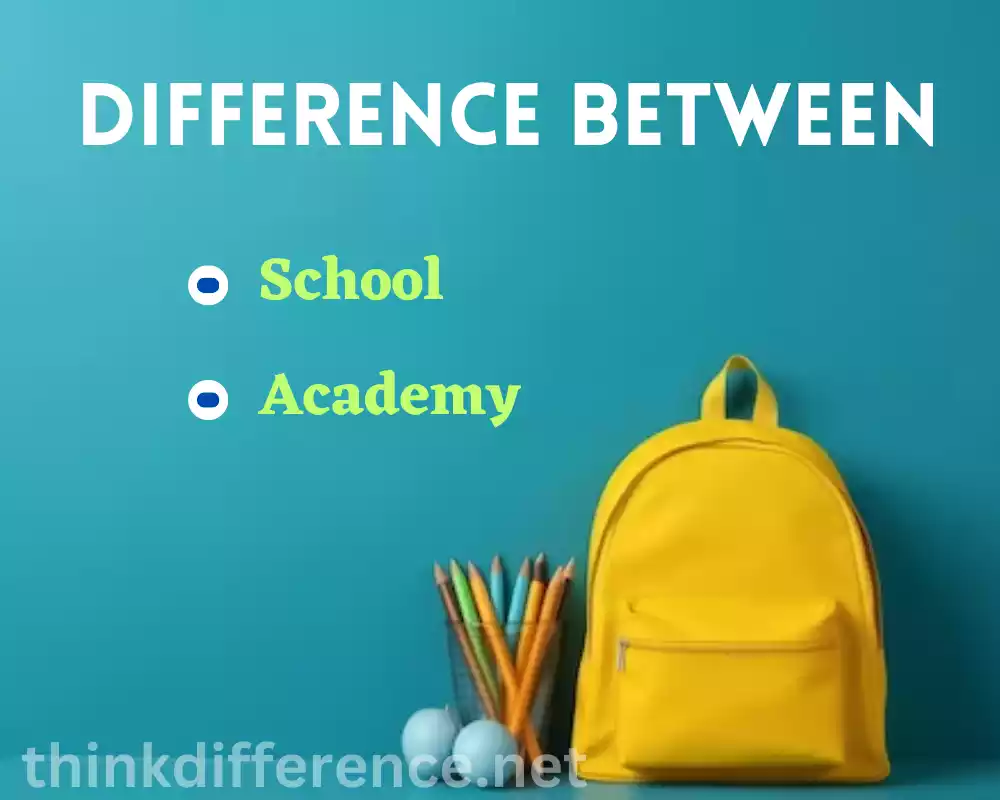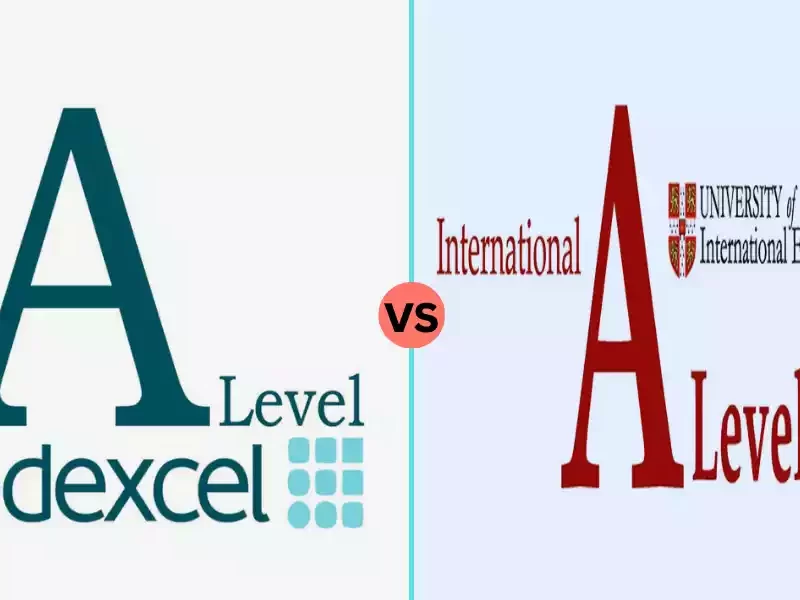School and Academy aim to create an ideal learning environment for their students. They have dedicated facilities, resources, and a qualified faculty to support the educational needs of students. These institutions follow a systematic approach to impart knowledge and foster holistic development.
What is School?
All schools are considered as an institution and they are dedicated to the education as well as growth for students.
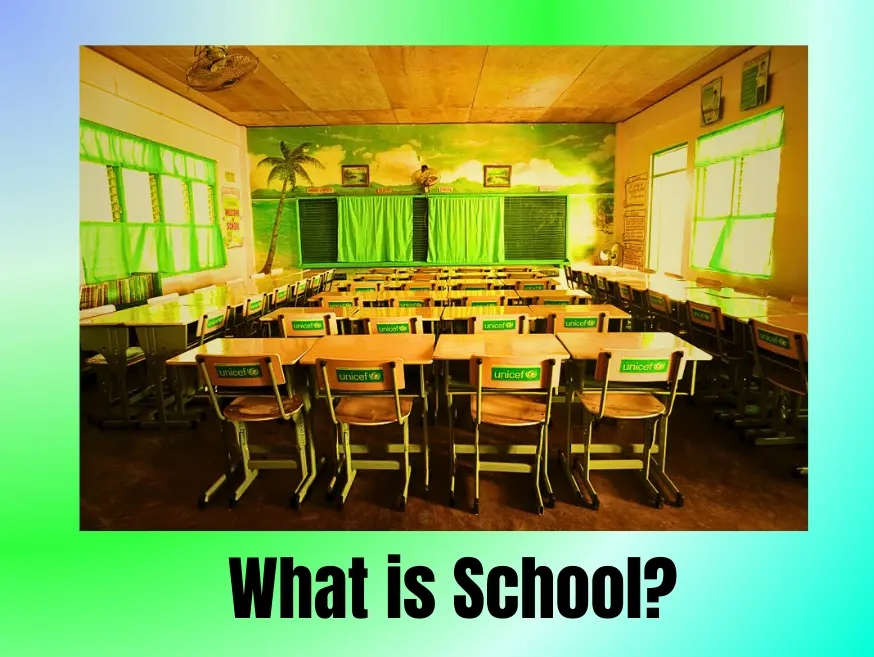
Students assemble at schools for formal guidance and instruction across many topics and skills. Schools play an essential part in supporting intellectual, social, emotional development as well as physical growth for pupils enrolled.
School environments tend to provide a structured setting for education and follow a curriculum designed by educators who infuse knowledge into students while helping facilitate and assessing progress. Teachers play an instrumental role in imparting this knowledge as teachers are responsible for imparting it while simultaneously monitoring its implementation by students. School curricula typically include subjects like math, science, language acquisition (Languages and Social Studies), physical education as well as artistic pursuits or foreign languages if applicable.
Schools provide classrooms and libraries as part of the educational experience for their students, along with laboratories, lab equipment and extracurricular activities such as clubs sports events cultural activities to aid learning processes. Classes or grades may also be assigned based on age or education level allowing schools to offer different grade levels or classes which reflect age/education differences among their pupils. Extracurricular events like clubs sports cultural events provide extra motivation and help nurture holistic development of pupils enrolled at these schools.
Public schools are those funded and administered by the government and open to students living within certain geographical regions, while privately run ones typically operate independently with separate admission criteria and fees. Special needs schools like vocational, alternative, international schools etc also exist.
School is an integral institution in society. It equips children with essential knowledge, skills and opportunities for personal and academic growth as they prepare for future endeavors.
What is an Academy?
An academy is an educational institution that focuses on specialized fields of study or specific disciplines. It is often distinguished by its emphasis on in-depth learning, expertise development, and practical training in a particular area. Academies can exist at various educational levels, including primary, secondary, higher education, and professional training.
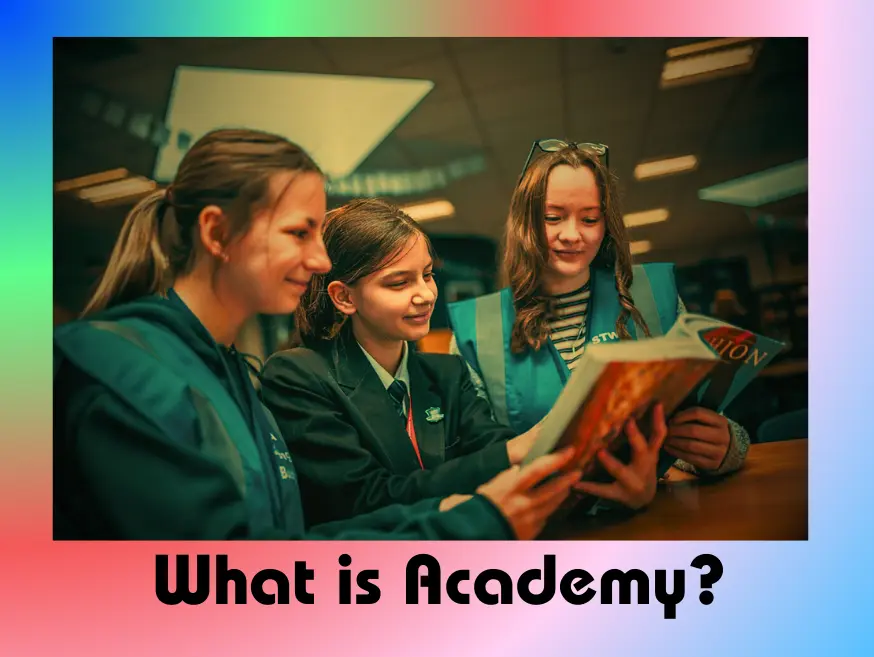
Academies differ from traditional schools by providing more specialized subjects than just those offered through general coursework – like art, sciences, sports, music or technology. They provide specialized programs, curriculum, and resources tailored to the particular field of study or skill development.
Academies are designed to provide focused and intensive education in their respective disciplines. They aim to cultivate talent, nurture proficiency, and prepare individuals for careers or further education in their chosen field. The instruction in academies often goes beyond theoretical knowledge, incorporating practical applications, hands-on training, and real-world experiences relevant to the specific domain.
Academies can be independent institutions or affiliated with universities, professional organizations, or industry associations. They may have their own governance structure, curriculum guidelines, and admission criteria. Some academies also collaborate with industry partners, professionals, or experts to enhance the relevance and quality of education and training.
The size of academies can vary, with some having small class sizes to provide more personalized attention and individualized instruction. They often attract students who have a particular interest, talent, or passion for the specialized field offered by the academy.
An academy provides a focused and specialized educational environment for individuals seeking to develop expertise and excel in a specific discipline or skill. This program gives students a truly unforgettable experience that prepares them to meet and excel at whatever challenges and opportunities are found within their chosen field.
Differences of School and Academy
The following are some key differences between schools and academies:
1. Scope of Education:
- School: Schools offer a broad-based education covering various subjects and disciplines. The course of study has been adapted to give participants an all-encompassing education.
- Academy: Academies focus on specialized fields or specific disciplines. They offer in-depth education and training in a particular subject area, emphasizing expertise development in that specific field.
2. Curriculum:
- School: Schools typically follow a standard curriculum which encompasses math, science, language arts and social studies among others. The curriculum aims to provide a balanced education.
- Academy: Academies have specialized curricula tailored to the specific field of study or discipline they focus on. The curriculum is designed to provide comprehensive knowledge, skills, and practical training in that particular domain.
3. Teaching Approach:
- School: Schools generally employ a broad-based teaching approach, focusing on imparting knowledge across multiple subjects and disciplines. The teaching methods vary, including lectures, group activities, discussions, and assessments.
- Academy: Academies often employ specialized teaching approaches that are tailored to the specific field of study. They may incorporate hands-on learning, practical training, industry exposure, and mentorship from experts in the field.
4. Student Population:
- School: Schools typically have a diverse student population from various backgrounds, interests, and abilities. Students of various backgrounds are welcome in an inclusive learning environment.
- Academy: Academies tend to attract students who have a particular interest or talent in the specialized field offered by the academy. The student population is often more focused and passionate about the specific discipline.
5. Admission Process:
- School: Schools generally have open admission policies, and students are often assigned to schools based on geographical boundaries or school zoning. There may be exceptions for specialized schools within the public system or private schools with selective admissions.
- Academy: Academies often have specific admission criteria and selection processes. They may require entrance exams, auditions, or interviews to assess the students’ aptitude or talent in the specialized field. Some academies have limited enrollment capacity.
6. Facilities and Resources:
- School: Schools provide basic facilities and resources necessary for general education, classrooms, libraries, laboratories, and sports facilities. The resources may be more general-purpose and shared among different subjects.
- Academy: Academies often have specialized facilities and resources specific to the field of study. For example, a music academy may have dedicated music studios, practice rooms, and instruments, or a sports academy may have specialized training facilities and equipment.
7. Emphasis on Extracurricular Activities:
- School: Most schools provide extracurricular activities like sports teams, clubs and arts programs as part of an overall holistic education for their students outside the classroom setting.
- Academy: To maximize specialized field instruction, some academies offer limited extracurricular programs outside their specialty area. They may offer specialized extracurricular options directly related to the field of study or provide opportunities for students to participate in competitions, performances, or projects within their specialized area.
Specific characteristics of academies and schools may depend upon their educational system, location and individual institution. These differences serve as general distinctions but may not apply universally to all schools and academies.
Similarities of School and Academy
While Schools and Academies have distinct characteristics, they also share some similarities, including:
- Educational Institutions: Both schools and academies are educational institutions designed to provide learning opportunities and formal education to students.
- Learning Environment: Schools and Academies both provide students with a structured environment in which to engage in educational activities, take classes, interact with their teachers and peers and form new bonds between themselves and them.
- Qualified Educators: Both schools and academies employ qualified educators, including teachers, instructors, and professors, who are responsible for delivering instruction and facilitating learning.
- Educational Standards: Both schools and academies adhere to certain educational standards and guidelines, ensuring that the quality of education meets specific criteria and requirements.
- Student Assessment: Both schools and academies employ assessment methods to evaluate student learning and progress. This can include tests, exams, projects, presentations, and other forms of evaluation.
- Academic Support: Students in schools and academies can receive academic support such as tutoring, guidance and counseling to enhance their learning experiences while meeting individual needs.
- Personal Development: Both schools and academies strive to nurture holistic development of students, including not just academic growth but also their social, emotional, physical development.
- Accreditation or Recognition: Schools and academies may seek accreditation or recognition by relevant educational authorities or accrediting agencies to validate the credibility and quality of their educational program.
- Educational Goals: Schools and Academies share one objective – to equip their students for future academic pursuits, careers and lifelong learning. Both institutions equip their pupils with skills that facilitate personal and professional growth.
Though schools, academies, and other educational institutions share certain similarities, their scope and implementation may vary based on each institution, its educational system and level.
The Role of Teachers in Schools and Academies
Teachers play an indispensable role in schools and academies, shaping student successes and development and their educational experience in crucial ways.
Their role extends beyond delivering content and includes various responsibilities:
- Instruction: Teachers are responsible for planning and delivering instruction to students. They create lesson plans, select appropriate teaching materials and resources, and employ effective teaching strategies to engage students and facilitate their learning.
- Knowledge and Skill Development: Teachers impart knowledge and skills in various subjects or specialized fields. Students benefit from teachers as they explore new concepts, develop critical thinking and problem-solving abilities and explain complex ideas.
- Assessment and Evaluation: Teachers assess student progress and understanding through various assessment methods, such as tests, quizzes, projects, and presentations. They provide feedback, identify areas of improvement, and guide students in their learning journey.
- Classroom Management: Teachers create a positive and inclusive learning environment by establishing clear expectations, managing classroom behavior, and fostering a sense of respect, collaboration, and discipline among students.
- Individualized Instruction: Teachers recognize the diverse learning needs and abilities of students and strive to provide individualized instruction and support. They differentiate their teaching approaches, adapting strategies to meet the unique needs of each student.
- Mentorship and Guidance: Teachers serve as mentors and guides, providing academic and personal support to students. They offer guidance in setting goals, making decisions, and navigating challenges. Teachers can assist their pupils’ emotional and social development.
- Collaboration and Professional Development: Teachers collaborate with colleagues, administrators, and parents to enhance the learning experience. They participate in professional development activities, attend workshops and conferences, and engage in continuous learning to improve their instructional practices and stay updated with educational trends.
- Communication: Teachers communicate regularly with parents and guardians, sharing information about students’ progress, strengths, and areas for improvement. They facilitate parent-teacher conferences and maintain open lines of communication to foster a partnership in supporting student learning.
- Role Models and Inspirations: Teachers serve as role models, inspiring students to reach their potential, instilling values, and nurturing a passion for learning. They encourage curiosity, critical thinking, creativity, and a lifelong love for education.
Teachers in both Academies and Schools can have an enormous effect on the intellectual, social and emotional growth of their pupils. Their dedication, expertise, and commitment to education shape the future of individuals and contribute to the broader advancement of society.
Teaching Methods of Schools and Academies
Schools and academies use various teaching methods to engage and foster student learning, depending on factors like education level of students, subject of choice and specific goals of an institution.
Here are some of the more frequently employed methods in schools and academies:
- Lecture Method: This traditional method involves the teacher delivering information through spoken presentation. It is often used for introducing new concepts, explaining complex ideas, or providing an overview of a topic.
- Discussion-Based Method: This method promotes interactive learning by engaging students in conversations, debates, and group discussions. It encourages critical thinking, active participation, and the exchange of ideas among students.
- Cooperative Learning Method: This method involves organizing students into small groups to work collaboratively on tasks or projects. It fosters teamwork, communication skills, and peer learning as students collectively solve problems or complete assignments.
- Inquiry-Based Method: This method emphasizes student-led learning through questioning, investigation, and exploration. Encourage them to pose questions, conduct research and form conclusions based on facts and critical thought.
- Problem-Based Method: Students are presented with real world scenarios or problems they must resolve using knowledge and skills they possess, thus encouraging critical thinking, problem-solving abilities and integration across subjects.
- Experiential Learning Method: This method focuses on hands-on experiences and practical application. It often involves real-life experiences, simulations, field trips, or laboratory experiments to deepen understanding and foster skill development.
- Project-Based Method: This method involves students working on extended projects or investigations that require them to explore a topic in-depth. It encourages research, collaboration, problem-solving, and the production of a final product or presentation.
- Differentiated Instruction Method: This method recognizes that students have diverse learning needs, interests, and abilities. It involves tailoring teaching methods, content, and assessments to meet individual students’ unique requirements, promoting personalized learning experiences.
- Technology-Enhanced Method: This method incorporates the use of educational technology tools, resources, and platforms to enhance teaching and learning. It can include multimedia presentations, online discussions, virtual simulations, and digital learning resources.
Effective teaching methods often involve a combination of approaches, catering to different learning styles, and promoting active engagement. Teaching methods vary based on factors like subject, student age and developmental stages, learning objectives and educational context. Teachers in schools and academies continuously explore and adapt teaching methods to provide engaging and effective learning experiences for their students.
Challenges Faced by Schools and Academies
Different challenges can undermine the successful operation of Schools and Academies and limit their capacity to provide quality education, among them being:
- Funding: Insufficient funding can limit resources, infrastructure development, and access to educational materials, impacting the overall quality of education provided by schools and academies. Limited budgets can hinder the implementation of innovative programs, professional development opportunities for teachers, and the availability of essential resources for students.
- Educational Equity: Schools and academies face significant pressure to provide equal educational opportunities to all their students regardless of socioeconomic background, abilities or geographical location. Ensuring equitable access to quality education and addressing achievement gaps requires targeted interventions and support systems.
- Teacher Shortages: A shortage of qualified and experienced teachers can affect both schools and academies. Teacher recruitment and retention challenges can arise due to low salaries, limited career advancement opportunities, and high workloads. The shortage of teachers can lead to larger class sizes, reduced individual attention, and compromised learning outcomes.
- Technological Integration: Integrating technology effectively into the educational process can be a challenge for schools and academies. This includes providing access to devices, reliable internet connectivity, and training teachers to effectively use technology for instruction. Additionally, ensuring digital literacy for both teachers and students is crucial for maximizing the benefits of technology in education.
- Curriculum Relevance: As society and job markets change, curriculum must stay current and relevant to meet future demands. Schools and academies need to adapt their curricula accordingly in order to provide students with new knowledge, skills, and technologies necessary for future job markets.
- Student Motivation and Engagement: Maintaining student engagement can be challenging in our world of distraction. To keep their students focused and interested, schools and academies need to use effective teaching methods with experiential and interactive learning components in place.
- Engaging Parents and Community Members: In order for schools and academies to thrive, it is imperative they develop strong partnerships with both their parents and wider community. Although engaging these stakeholders in education processes may prove to be challenging at times due to language barriers, cultural differences and differing levels of parental engagement – it remains paramount.
- Mental Health and Wellbeing: Schools and Academies face growing pressure to address students’ mental wellbeing. Support services, creating a positive climate in school and creating a nurturing atmosphere are essential parts of addressing social-emotional concerns while improving students’ overall well-being.
- Assessment and Accountability: Meeting assessment and accountability requirements can be a challenge for schools and academies. Balancing the need for standardized assessments with the goal of holistic student development requires careful planning and implementation to ensure that assessments accurately reflect students’ abilities and provide meaningful feedback for improvement.
To overcome these difficulties, educators, administrators and policymakers must join forces in finding creative solutions. Resources should be distributed efficiently so all schools/academies are capable of offering quality education to their pupils/students.
The Future of Schools and Academies
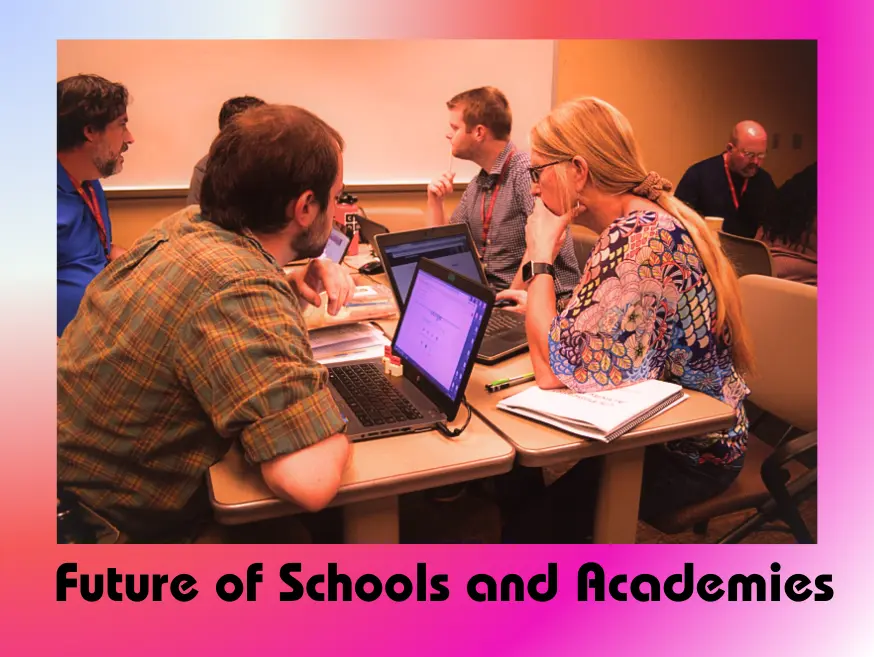
Future prospects of academies and schools will likely be determined by trends and factors in education that are currently emerging, including:
- Technology Integration: Technology will continue to play a significant role in education, transforming the way teaching and learning occur. Schools and academies will increasingly integrate technology tools, digital resources, and online platforms to enhance instructional delivery, personalize learning experiences, and facilitate remote or blended learning models.
- Personalized Learning: The future of education will prioritize personalized learning approaches that cater to individual student needs, interests, and learning styles. Adaptive learning platforms, data analytics, and artificial intelligence will be utilized to tailor instruction and provide targeted interventions, ensuring each student’s optimal growth and development.
- Skill Development for the Future: Schools and academies will place greater emphasis on developing the skills and competencies needed for the future workforce. Cultivate critical thinking, problem-solving skills, creativity and collaboration skills as part of digital literacy in order to prepare students for meeting the evolving requirements of global markets.
- Blended and Flexible Learning Environments: The future of education will see a rise in blended learning models that combine face-to-face instruction with online and digital learning components. Flexible learning environments such as virtual classrooms and competency-based learning offer students more control over the pace, timing and location of their studies.
- Lifelong Learning and Continuous Education: The future will emphasize the importance of lifelong learning, as the knowledge and skills required for employment evolve rapidly. Schools and academies will focus on cultivating a culture of continuous education, providing opportunities for upskilling, reskilling, and professional development for both students and educators.
- Global Connections and Collaboration: The future of schools and academies will leverage technology to foster global connections and collaborative learning experiences. Students will participate in cross-cultural interactions, virtual collaborations and international projects to broaden global perspectives, cultural competency and collaborative abilities.
- Focusing on Mental Health and Well-Being: Schools and Academies will place great importance on students’ mental health and well-being while acknowledging how emotional and social influences have an effect on learning outcomes. Education systems will integrate well-being programs, mindfulness practices, and support services to promote mental health and create nurturing and inclusive learning environments.
- Community Engagement and Partnerships: Schools and academies are actively partnering with local businesses and organizations in order to offer students real-world experience while expanding learning opportunities. Mentorship relationships will serve to bridge any gaps between education, industry and work environments – which ultimately helps strengthen students’ educational experiences as they transition into adult life.
- Environmental Sustainability and Global Citizenship: Schools and academies will promote environmental sustainability and foster a sense of global citizenship among students. Education will emphasize ethical responsibility, social equity and environmental stewardship as it prepares students for active global citizenship.
Future prospects of schools and academies depend on factors like geography, educational systems and individual institutions; trends give us insight into where education might head as we adapt to learners’ changing needs, workplace changes and technological innovations.
Conclusion
Schools and academies play a vital role in shaping the future of our society. They provide the platform for nurturing young minds, fostering creativity, and instilling values that guide students throughout their lives. Embracing holistic learning approaches, leveraging technology, and addressing the needs of diverse learners are essential to preparing students for the challenges of the future.

